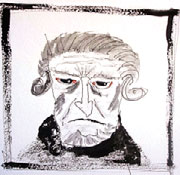
by Jesse Kornbluth ’64
Half a century ago, I left the suburbs of Philadelphia to become a boarding student at Milton. Philadelphia meant a snoozy day at a suburban junior high school, afternoons watching inner-city kids jitterbugging on “American Bandstand,” evenings doing homework with the radio on loud.
Milton meant suits at dinner, toothpaste inspection, and homework in a communal study hall, where, if you asked the English teacher in charge—in a whisper—“ Can I go to the bathroom?” he might bellow, “I don’t know. Can you go to the bathroom?”
As transitions go, it was like going to sleep in your own bed and waking up on the moon.
In those days, Milton was staunchly traditional. Teachers were addressed as “sir.” After football games, there was tea in the gym, served in real china. Before the year’s two black-tie dances, you rushed to get your “dance cards” signed by your coolest friends, so your dates wouldn’t think you were a social outcast.
But of all the dazzling differences between my old life and Milton, nothing compared with the night before we went home for Christmas, when the headmaster read A Christmas Carol in Straus Library. Arthur Bliss Perry was as Old Boston as it gets. Son of a Harvard professor who discoursed on Emerson and edited the Atlantic Monthly, he came to Milton to teach in 1921 and became headmaster in 1947. In 1961, when I first encountered him, he was a figure out of time—a tall, thin patrician, wearing three-piece suits, a school tie, and eyeglasses with octagonal lenses and the thinnest of wire frames.
For this reading, the library tables had been cleared, replaced by rows of chairs. Two tall lamps, one on each side of a baronial armchair, were the only lights.
Mr. Perry entered and took his seat.
 And then he became Charles Dickens.
And then he became Charles Dickens.
He read without accent and without drama. He didn’t play up the sentiment. He simply delivered— as he had each December for 14 years and would for two more—the greatest Christmas story since the original one. I got shivers. Maybe shed a tear. It was that remarkable an experience.
Last December, I decided our almost-nine-year-old daughter was ready for a version of A Christmas Carol not dumbed down by Disney. I didn’t imagine I could equal Arthur Perry’s performance, but if an audience of adolescent boys counting down the hours until their liberation could listen in rapt silence to Dickens, I certainly thought our tot could make it, over two or three nights, to the end.
She lasted five minutes.
Some parents, at that point, would blame her near-total boredom with Scrooge on computer games and kiddie television and an overly permissive culture.
Not this parent.
Books change over time, and over 170 years, A Christmas Carol has changed more than most. The evocation of Scrooge’s place of business is a slow starter. By our standards, the language is clotted and, at 28,000 words, the piece is seriously overwritten—as I was reading it, I was scanning ahead to see what I could paraphrase or cut.
A few weeks after the non-start with our daughter, I realized that I wanted her to experience A Christmas Carol sooner rather than later. And I got serious—I started to work on the text. My goal wasn’t to rewrite Dickens, just to update the archaic language, trim the dialogue, cut a few extraneous characters—to reduce the book to its essence, which is the story. In the end, I did have to write a bit, but not, I hope, so civilian readers will notice; I think of my words as minor tailoring, like sewing on a missing button or patching a rip at the knee.
My version of A Christmas Carol is half the length of the original. Like the Paige Peterson illustrations that accompany it, it means to convey the feeling of London in 1843 without the formal diction and Victorian heaviness. It means to be a story that adults can read to their kids right to the end, and that kids can read by themselves with pleasure.
This Christmas, I’ll sit near a glowing fi re in our living room and read “Christmas Carol” to our not-quite-ten-year-old daughter. Unlike Arthur Perry, I’ll amp up the drama, the better to keep her interested. Unlike the young Jesse Kornbluth, our child will say the story wasn’t all that interesting. No matter. In a world that can’t kill off traditions fast enough, this is one worth keeping.
Find the Kindle edition of Jesse’s “Christmas Carol” on Amazon.com.
Ebenezer Scrooge illustration by Paige Peterson
Post Script is a department that opens windows into the lives and experiences of your fellow Milton alumni. Graduates may author the pieces, or they may react to our interview questions. Opinions, memories, explorations, reactions to political or educational issues are all fair game. We believe you will find your Milton peers informative, provocative and entertaining. Please email us with your reactions and your ideas at cathy_everett@milton.edu.



